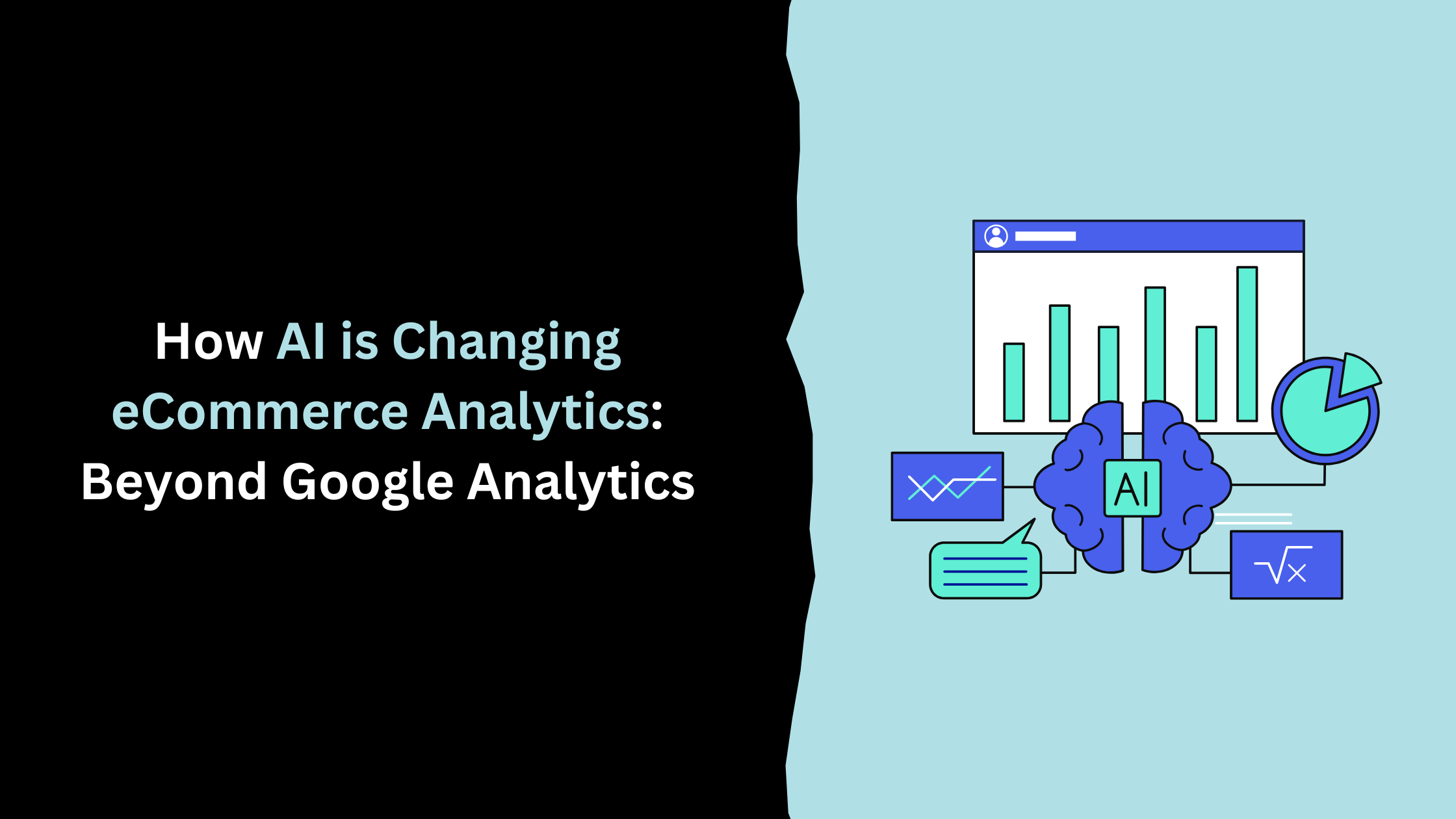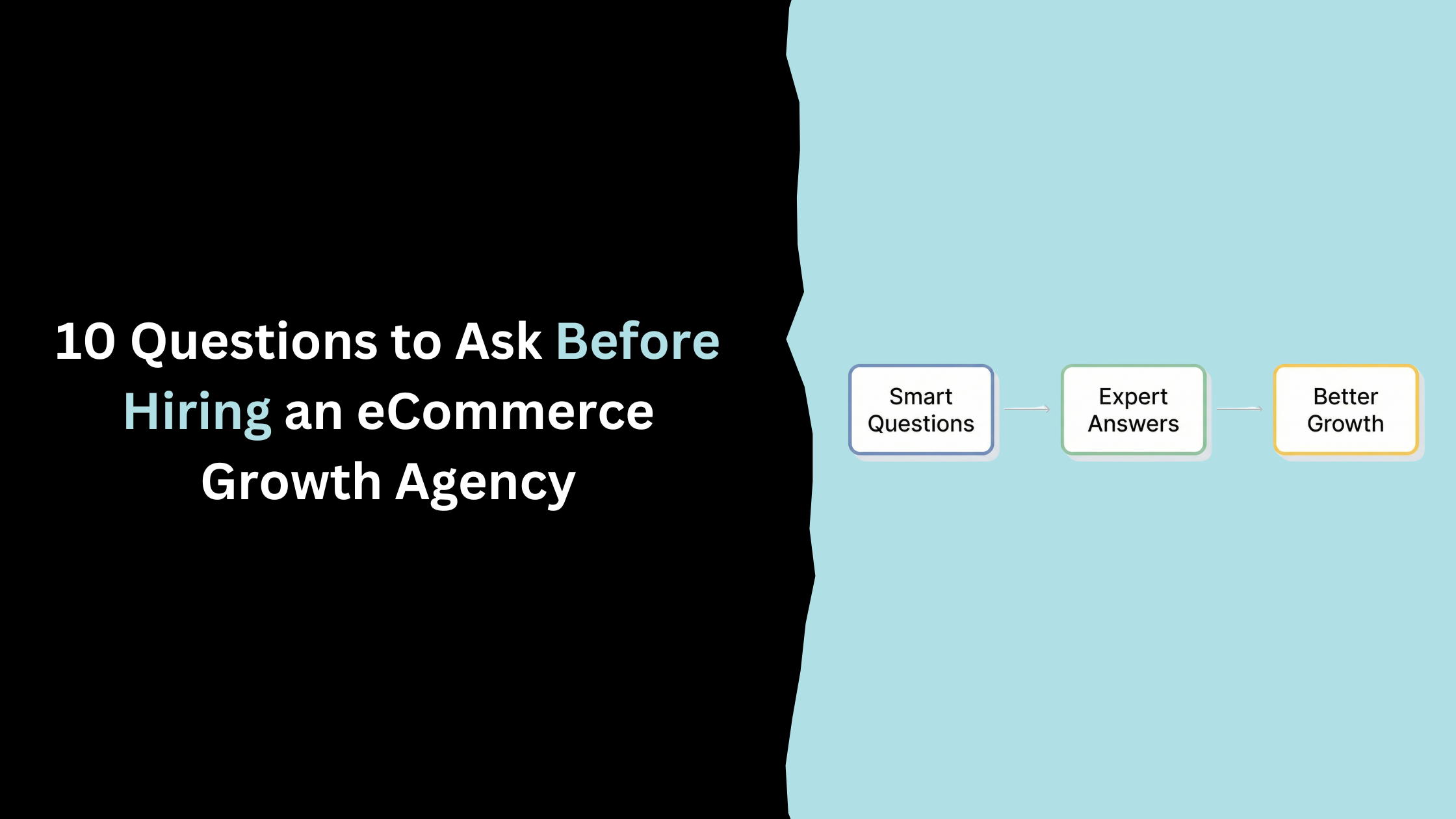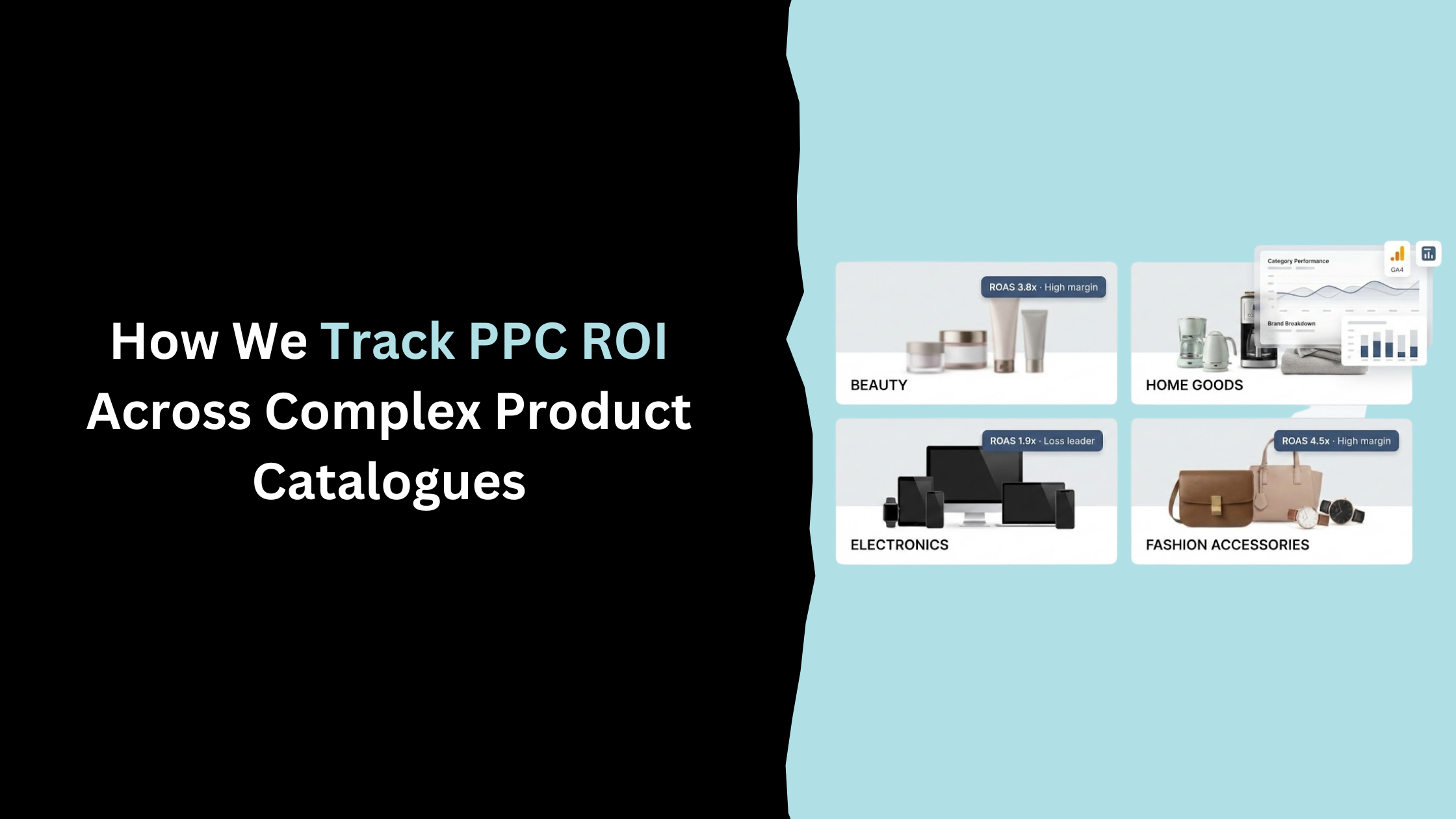Table of Contents
AI-powered analytics in eCommerce is more than fancy dashboards.
It’s systems that interpret mountains of raw data, connect the dots instantly, and hand you decisions on a silver plate.
For years, Google Analytics reigned as the default lens into online behaviour. It’s familiar, free, and deeply embedded in marketing playbooks. But in 2025, it’s showing its age with limited cross-platform tracking, cookie restrictions (/post/can-a-i-intelligence-replace-cookie-data-yes-heres-how), and a focus on historical clicks rather than predicting what’s next.
Modern AI tools go further. They analyse not just clickstream logs but purchase histories, product images, social chatter, and even customer service transcripts.
That breadth changes everything.
The Shift from Traditional Analytics to AI-Driven Insights
In the early days, web analytics was glorified traffic counting.
Then came event tracking, funnels, and attribution models, which are better, but still reactive.
Now, commerce runs on data from dozens of touchpoints. Traditional platforms can’t keep up with that complexity, especially when customer journeys zigzag between devices, channels, and marketplaces. They miss nuance.
AI thrives here. Predictive models forecast demand before it spikes. Personalisation engines adjust storefronts on the fly. Anomaly detection flags issues while there’s still time to fix them.
It’s not just faster, it’s smarter.
Limitations of Google Analytics in Modern eCommerce
Google Analytics has long been the default, but its cracks are showing.
Even GA4, with its event-based model, struggles to stitch together journeys that span apps, devices, and offline touchpoints.
Cookie tracking is another sore spot. With browsers killing third-party cookies and GDPR/CCPA tightening the screws, GA’s data collection is often incomplete. First-party setups help, but they still leave blind spots.
Sampling adds yet another layer of frustration, especially for high-traffic stores where precision matters. You’re making decisions from estimates, not the full picture.
And while GA is built for reporting past actions, modern eCommerce demands prediction and personalisation.
That’s where it falls behind.
How AI is Transforming eCommerce Analytics
Real-time prediction changes the game. Instead of waiting for end-of-day reports, AI spots demand surges or inventory risks as they happen. Platforms like Salesforce Commerce Cloud and Synerise feed those alerts straight into your merchandising or ad spend decisions.
Dynamic pricing takes it further. Machine learning adjusts prices based on competitor moves, stock levels, and even local events. Tools like Prisync or Omnia Retail make those changes in seconds, not days.
Visual search turns product discovery into a camera click. Customers upload a photo, and AI finds exact or similar items instantly. Syte and ViSenze are leaders here, boosting conversion rates for brands that adopt it.
NLP recommendations bring a human touch to suggestions. Instead of static “customers also bought,” engines like Coveo and Bloomreach parse language, queries, and behaviour to tailor product lists in context (/post/how-to-use-customer-data-for-personalised-shopping-experiences).
Churn prediction works quietly in the background. AI models flag at-risk customers early so you can trigger retention offers or personalised outreach. Klaviyo and Optimove excel at turning those warnings into saved revenue.
AI-Powered Alternatives to Google Analytics
Plenty of platforms now offer analytics with machine learning baked in.
They don’t just track; they interpret, predict, and recommend.
Adobe brings heavyweight enterprise muscle, while Mixpanel thrives on lean, user-focused reporting.
Amplitude digs deep into user journeys, making it perfect for growth teams.
And Piwik PRO? That’s the choice when compliance isn’t optional.
The Role of Generative AI in eCommerce Insights
Generative AI is making analytics conversational. No SQL queries, no digging through endless menus. Just ask, and the system responds in plain language.
Natural language query capability means you can type, “Show me the top products among first-time buyers last quarter”, and get an answer in seconds. It’s not just a table, it’s charts, summaries, and even suggested next steps.
AI dashboards take it up a notch. They adapt to your priorities, surfacing anomalies, forecasts, and opportunities without you asking. Over time, they learn what matters to you and present it proactively.
Data Privacy and Ethical Considerations
GDPR and CCPA aren’t just checkboxes; they’re the guardrails for how customer data is collected, stored, and used.
Ignore them, and the fines aren’t the only thing that’ll sting.
AI brings its own set of challenges. Models can absorb and amplify bias from the data they’re trained on. That means your personalisation engine could unintentionally exclude or misrepresent certain customer groups.
Mitigation starts with diverse, representative datasets and regular audits. Layer in human oversight, clear documentation, and explainable algorithms so you know why a decision was made.
Algorithm transparency isn’t optional anymore, and if you can’t explain it, you probably shouldn’t deploy it.
Implementation Roadmap for AI Analytics
Start with a data readiness audit
Check if your information is clean, consistent, and accessible across platforms. Without that foundation, AI will only magnify the mess.
Next comes vendor selection
Match your needs with a provider’s strengths, whether that’s deep predictive modelling, privacy-first infrastructure, or seamless omnichannel tracking.
Then integrate
Hook the system into your CRM, eCommerce platform, and marketing stack so insights flow where they’re needed.
Finally, train your team
AI is only as effective as the people using it, so make sure they know how to interpret results, adjust settings, and spot opportunities.
Future of AI in eCommerce Analytics
Autonomous analytics will soon run without constant human intervention. Systems will identify trends, act on them, and adjust strategies in real time, while you focus on the bigger picture.
AR shopping will blur the line between browsing and buying. Customers will “place” products in their homes virtually, and analytics will track those interactions as seriously as checkout data.
Predictive supply chain models will forecast demand spikes weeks in advance. That means fewer stockouts, less overproduction, and a smoother customer experience.
The industry is shifting from reactive reporting to proactive orchestration, and those who adapt early will set the standard others follow.
Key Takeaways
AI delivers what Google Analytics can’t: real-time prediction, adaptive personalisation, and actionable foresight. It sees the road ahead, not just the path behind.
If you’re still relying solely on GA, you’re playing catch-up.
Choose an AI-powered tool, start small, and let it prove its worth in your own numbers.
Get in touch today
complete the form below for an informal chat about your business








